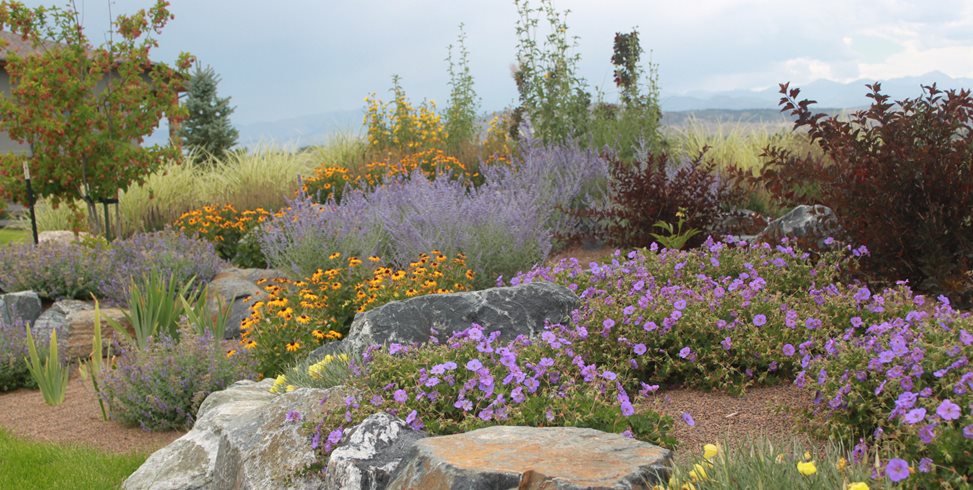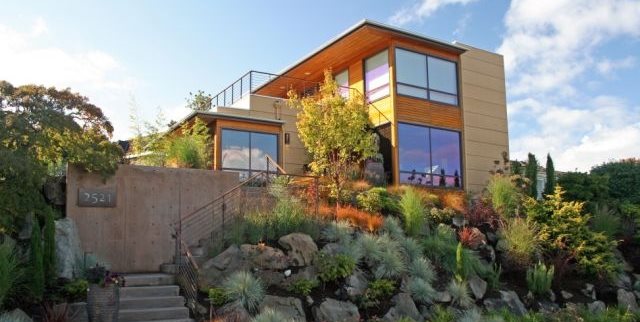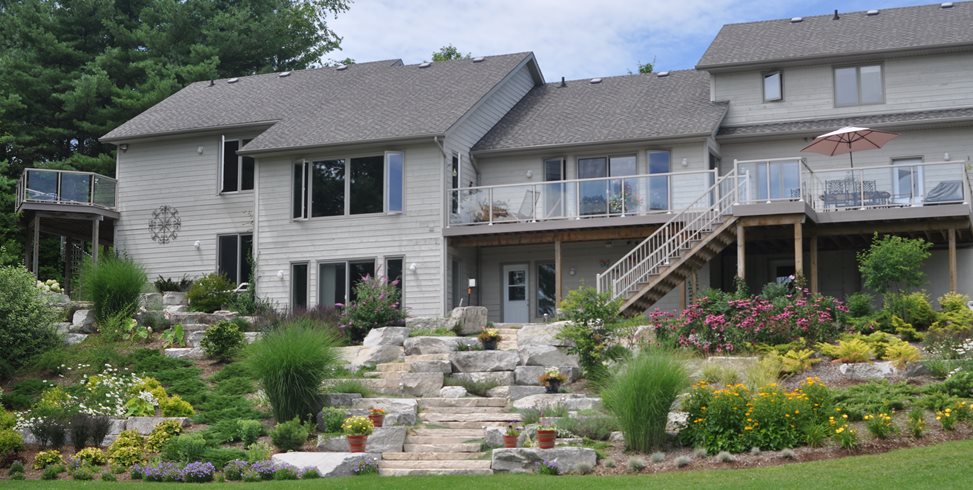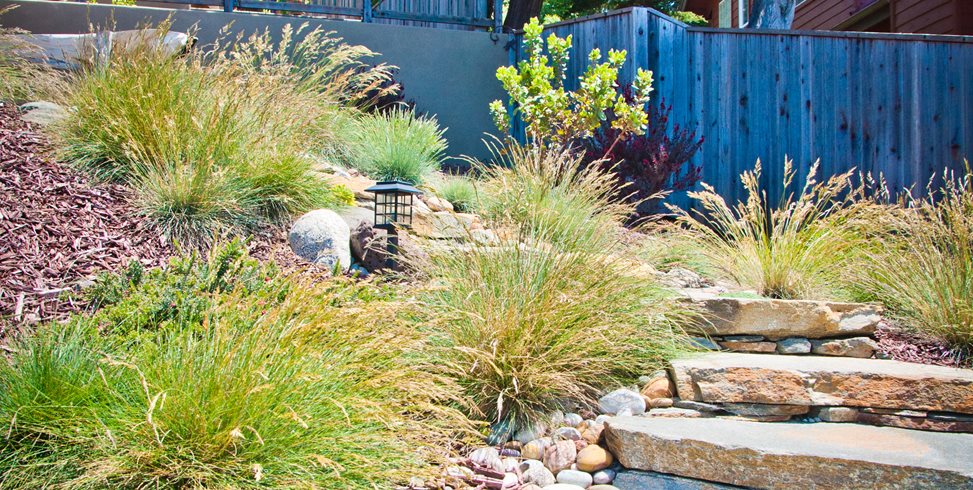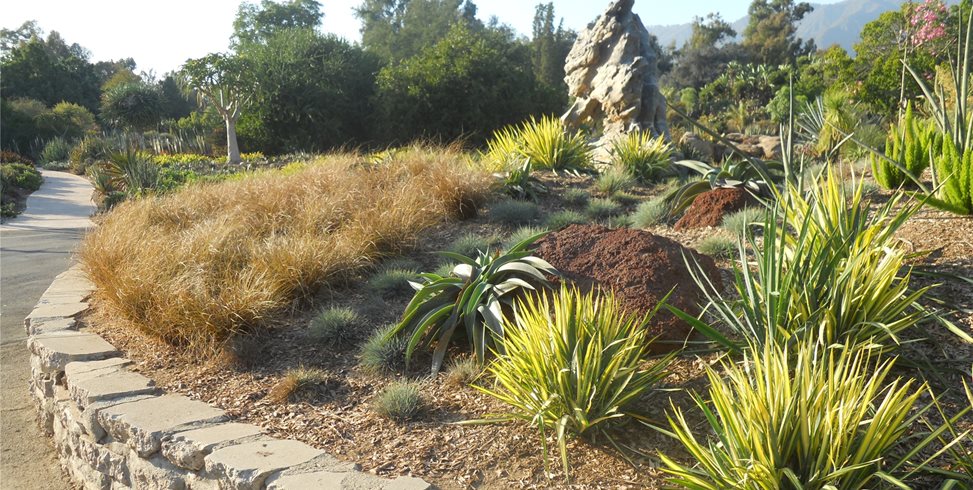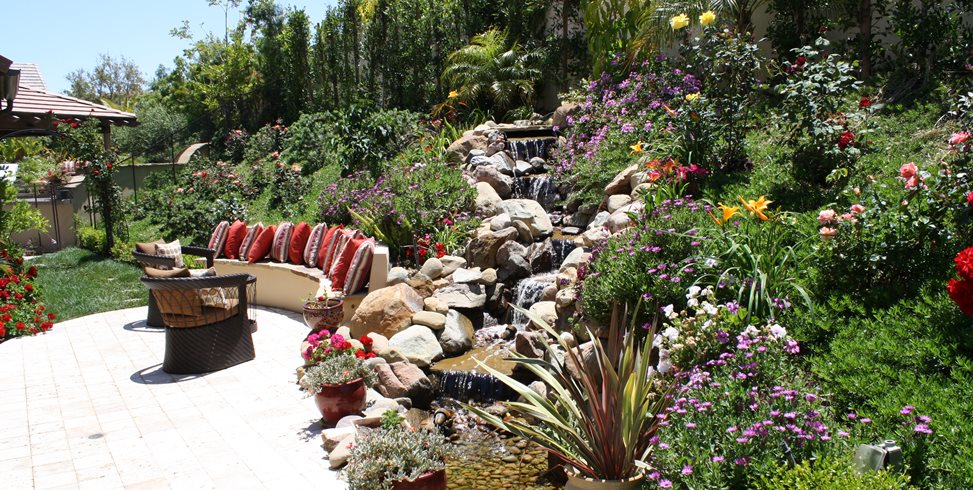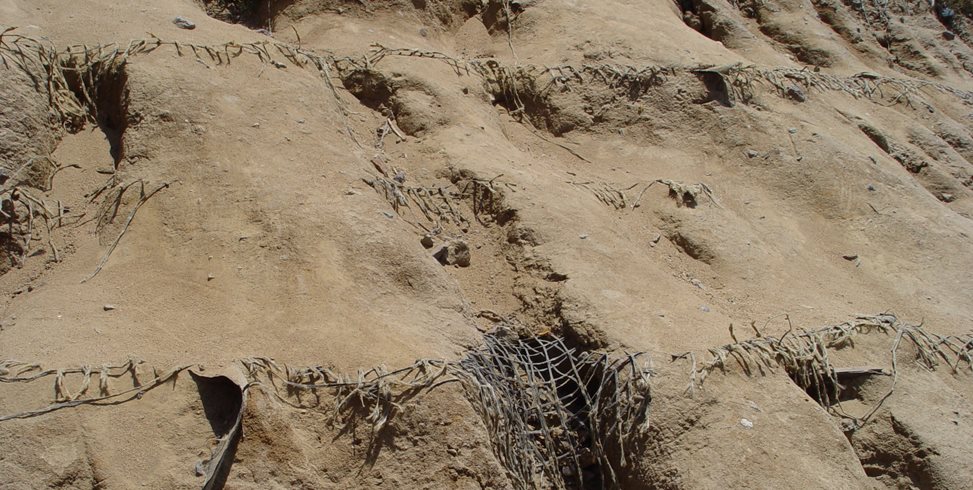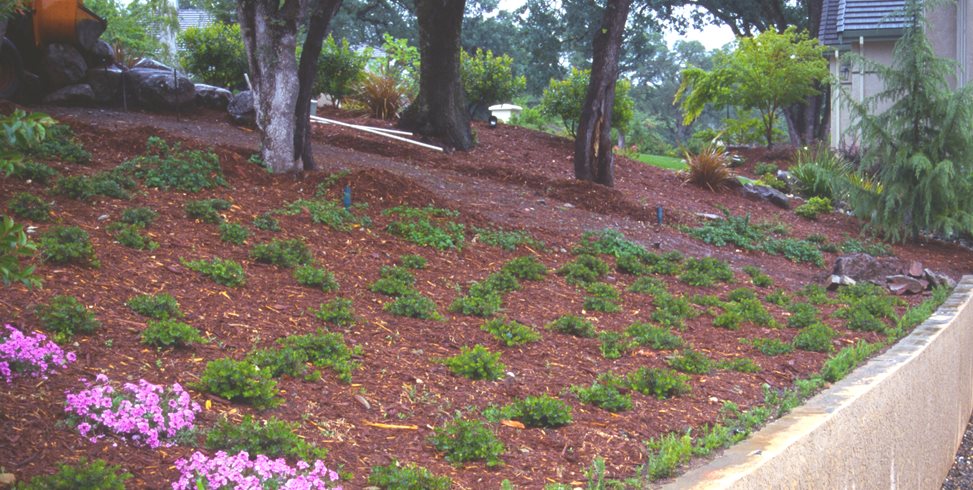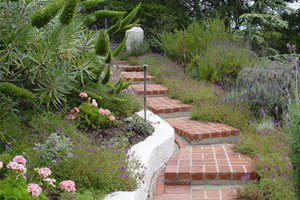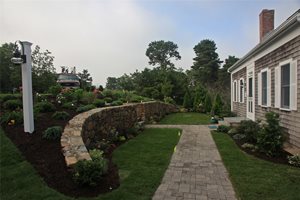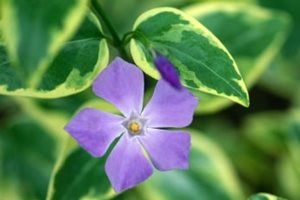Erosion Control for Residential Hillsides
How to prevent erosion with plants, geotextiles and moreHow you treat your slopes matters because there's always potential for erosion. Every raindrop that falls on bare soil dislodges soil particles. As it gathers and runs down the slope, more soil particles are picked up. Multiply this by the duration of just one rainstorm and you quickly understand how easy it is to lose ground due to unchecked erosion. Every particle lost in the water has to go somewhere. They'll settle out when the runoff slows, and in these spots silt builds up. It's a huge problem when silt deposits interfere with driveway stability or your swimming pool. It becomes a community issue when it clogs neighborhood drainage structures and storm drains.
Erosion has always been a problem for hillside subdivisions because lots feature a cut slope above and a fill slope on the bottom. Each slope demands a slightly different approach to erosion control techniques. Cut slopes are more prone to surface erosion problems. Fill slopes experience surface erosion too, but are also prone to subsurface problems that result from incomplete compaction prior to construction. Worst case is so much underground moisture contributes to liquefaction that destabilizes the earth. The best examples of such erosion problems arise after heavy rains in California that lead to mudslides in pricey view lot subdivisions.
How Plants Control Erosion
Plants are natural protectors of soil. They cloak the ground in foliage which prevents rain drops from falling directly onto soil particles. Instead, the plants diffuse the energy of raindrops so they filter down to the soil surface more gently. Plant roots help to bind soils underground. Those species with a large proportion of fine roots that spread over a large area prove the best choices for slope stabilization.
The nature of how a plant roots as well as its growth habit dictate its value as an erosion control plants. Your landscape architect or contractor knows them and how to ensure they become established on your slope, which is directly tied to the method if irrigation.
Groundcover plants prevent surface erosion. English ivy is a good example of how many plants installed into the slope will bind the surface tightly and cover it all with dense foliage. This planting strategy must be irrigated with broadcast sprinklers.
Creeping shrubs prevent surface and subsurface erosion. A creeping shrub, like prostrate rosemary has just one stem that spreads out in every direction with a carpet of foliage. That coverage slows the raindrop energy too. Shrubs are watered only at the trunk, which is better suited to drip or bubbler irrigation for water conservation.
Hydroseeding is a method of sowing seed on a large scale for immediate coverage. It is often required at the completion of a project to provide soil holding capacity until other plants mature. This quick-cover reduces the problem of sediment and runoff the first rainy season after completion. It's common to plant the slope with container grown shrubs and groundcovers, then spray the hydroseed right over the top of them for both short and long term solutions.
A local contractor is the best resource for solving erosion control issues for residential homesites. Knowledge of local soils, rainfall and plants that thrive in your microclimate as well as irrigation techniques aids in creating a palette of plants for the slope. The best planting design solutions include a diversity of plants. This ensures that should one species be threatened by pests or disease, there are plenty of others immune to the problem that remain to hold the slope.
Other Factors in Erosion Control
Angle of repose: This term is used by landscapers to describe how steep your slope is. It is expressed in a ratio of rise to run much like a house roof pitch. The steeper the slope, the faster water runs off, which creates challenges getting enough moisture to every plant.Geotextiles for Erosion Control
Newly graded slopes are vulnerable before and after planting. Your erosion control plants take time to become established and fill in both above and below ground. Until this happens your slopes will be temporarily exposed to erosion. Your contractor may recommend the use of a geotextile, which are man-made materials, laid on the earth and pinned into place. Because they are biodegradable, your contractor may plant right through it knowing that by the time plants fill in the fabric will decompose and eventually disappear.
- Burlap - Used for immediate erosion control on very steep slopes prone to disintegration.
- Jute mesh - Large square jute mesh is the standard for landscaping because it is easily planted through the grids.
- Coir mat - A byproduct of cocoanut processing, coir has great water holding capacity and resists decomposition for more long term use.
- 2:1 - This is the steepest incline capable of supporting plants, and is doubly tough on labor and irrigation. Sometimes these slopes will require retaining walls due to the great amount of siltation they produce.
- 3:1 - This is the steepest incline allowed for a lawn due to the limitations of lawn mowers. It is often the maximum allowed by city or county codes.
- 4:1+ - This is a more ideal slope which can be easily planted, and irrigation water is more likely to soak in.
Soil Type: Most fill slopes have no difficulty with soil types, but on cut slopes it can be a real challenge. This not only influences how much time it takes to dig a planting hole or trench for irrigation, it greatly affects the speed at which water penetrates the ground.
- Low fertility makes it tough for young plants to become established.
- Very dense soil resists moisture absorption unless it is applied at a very slow rate.
- Irregular soils with veins of stone or bedrock may limit where you can and can't dig planting holes.
- Fragmented soils fail to hold together once disturbed, leading to future erosion problems, particularly in sandstone and shale.

 Backyards
Backyards
 Front Yards
Front Yards
